Eleven Digital Media Surprises in 2011 - Levi Shapiro

It is 11-11-11, a good excuse to review eleven of the biggest digital media surprises of 2011.
1. Cable Advertising Fights Back: Back in 2002, aggregate audience for cable television overtook broadcast networks. In the interim, brands and agencies have been slow to transition ad budgets. At $9.3 billion, this year's cable upfront market finally matched the Big 4 broadcast networks.
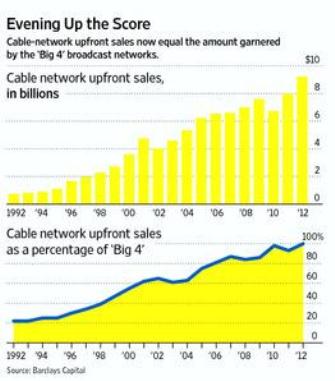
Cable Advertising Fights Back (Interactive): The largest US cable operators created a consortium called Canoe Ventures (www.canoe-ventures.com), to deploy interactive advertising across a national footprint. Four years and $150 million later, that goal is still unrealized. However, this year saw several RFI (request for information) proof of concept campaigns at the local level. According to an October 2011 press release, results from the Canoe CeeMee research projectdone in conjunction with the Association of National Advertisers (www.ana.net) showed that on average, 18% of adults 18to49 said "yes" to interactive offers and confirmed their choice. Additionally, unaided brand recall for the test brand was 126% higher following an exposure to an interactive offer, regardless of whether the viewer actually accepted the offer. Likelihood to purchase the test brand or to seek more information about the brand was 29% higher for all exposed to an interactive offer.
If you cannot see the video, please click here: http://www.canoe-ventures.com/rfi.php
2. Online Video Growing but Live TV Dominates: While 86% of internet users watched video last month (comScore), audiences for live TV continued to grow in 2011. In Australia, for example, commercial television audience hit a 7 year high this year, growing from 65% to 67% of audience.
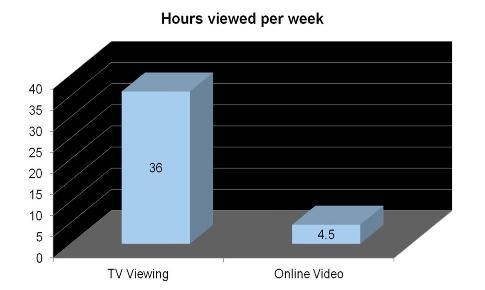
3. Second Screen, Particularly Tablets, Now Part of TV Viewing Experience: According to a November FutureSource Report across US, France, Germany and UK, more than 50% of TV viewers accessed the internet while watching TV. However, only 10% are accessing sites that increase engagement with the actual TV show.
While there are more than 500,000 Smartphone applications, most are irrelevant for the TV viewing experience. TV related applications that aid in discovery and viewing of video content are gaining the most traction (The Diffusion Group) (http://tdgresearch.com). More importantly, the tablet has become the preferred companion device for consumers in the TV watching environment (Strategy Analytics) (www.strategyanalytics.com). Platform and content providers that focus on great tablet experiences will have competitive advantage. One of the best examples is the imdb for iPad

4. Netflix is a Weaker Competitor than Originally Thought: Until last quarter, Netflix was the invincible "Pay TV killer" expanding to Latin America, UK and Ireland. However, after hiking subscriber fees by up to 60%, more than 800,000 customers abandoned the service, giving the company its first quarterly loss since inception in 1997.
Netflix needs to rapidly increase its library at a reasonable cost but Hollywood is playing hardball. Starz rejected a $300 million renewal deal with Netflix and DreamWorks cut a deal that is reportedly worth $30 million per title. Without a significant, and very expensive, library expansion, Netflix is no substitute for Pay TV.
5. Data Caps Here to Stay: All four of the major US wireless carriers have instituted some form of data cap. They had no choice. Already, more than half of all iPhone and 90 percent of iPad page views on AT&T are carried over WiFi. Expect to see these same companies and other broadband providers institute similar policies for their internet customers.
6. Smartphones Rule: Since Q1 of this year, in the US, EU and Japan, Smartphones now outsell feature phones. As of November 1st, 43% of all installed handsets in the US are download-capable Smartphones (Nielsen)
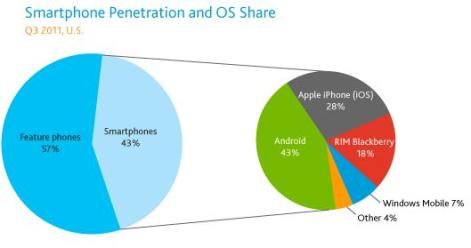
7. NFC Is Irrelevant: Near Field Communications (NFC) is a short-range wireless technology allowing consumers to waive their phones and make mobile payments. Handset makers, including HTC,LG, Motorola (www.motorola.com), RIM, Samsung and Sony Ericsson, are now embedding NFC chips. Research firm ABI is already predicting 80 million NFC enabled handsets by next year.
Major players are betting on NFC. This includes Google, which introduced "Google Wallet" last quarter with Citibank-branded MasterCards, and Isis, a mobile payments joint venture between AT&T, T-Mobile and Verizon Wireless that will launch next year.
The main barrier to adoption is the need for point-of-sale terminals supporting NFC. In the meantime, the market is embracing easier to deploy models, such as Square, or the 12 person, Des Moines, Iowa-based Dwolla. This company is on track to move more than $350 million this year. NFC will not be meaningful in the US for at least 5 more years, if ever.
8. Premium Online Display Advertising in Trouble: The recession has hastened the transition from online display ads to CPA and CPL models. Performance marketing now comprises 64% of total Online Advertising, up from 41% in 2005 and only 9% in 2000. Barclayspredicts this will grow to $22 billion next year.
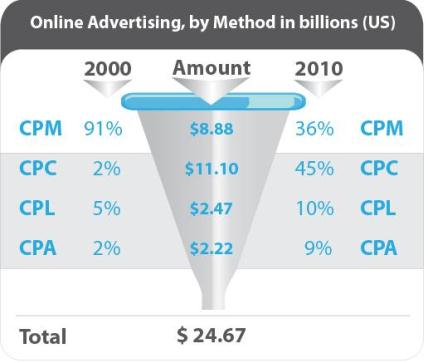
The competitive position of the premium online display networks (Yahoo (www.yahoo.com), MSN (www.msn.com) and AOL (www.aol.com)), is worse than many expected. Consider that Facebook (www.facebook.com) now accounts for one out of three online ad impressions and has grown by 66% this year. The joint ad sales platform announced by Yahoo, MSN and AOL this month will not slow the transition away from traditional display.
9. Bing Use Actually Growing: According to comScore (www.comscore.com), in September 2011, Bing (www.bing.com) very nearly matched Yahoo's search market share, representing 15% of all searches. Brands and SMB's are increasing their exposure to Bing, including their free online resources (http://advertising.microsoft.com/small-business/adcenter-downloads/microsoft-advertising-intelligence)

10. 3D Embedded in New TV Sets: 3DTV households are growing, even if demand for 3D content services is not. TV set manufacturers such as Samsung (www.samsung.com), LG (www.lg.com) and Vizio (www.vizio.com) are now embedding 3D technology into their high-end sets. For example, in the 40-inch and larger LCD TV panel segment, 3D penetration grew from 12.7 percent in Q1 to 21.7 percent in Q2 and 28.2 percent in Q3 (DisplaySearch) (http://www.displaysearch.com/cps/rde/xchg/displaysearch/hs.xsl/index.asp . Consumers cite the need for special glasses and lack of compelling 3D content as main reasons for ignoring 3D services.
11. Lack of Start-Up Visa Hurts US Tech Sector: The Start-Up Visa Act (http://kerry.senate.gov/press/release/?id=4e6a51f6-fb2b-4212-b299-b0c46c7e6b58 ) was sponsored in 2011 to help address the lack of skilled technical talent in Silicon Valley. Despite enjoying bi-partisan support, the bill is likely to be delayed until after the 2012 Presidential elections. This is bad news for the US economy, which is mired in 9% unemployment (http://www.bls.gov/news.release/empsit.nr0.htm). According to one study (www.kauffman.org/entrepreneurship/foreign-born-entrepreneurs.aspx), 52.4% of all Silicon Valley startups between 1995 to 2005 were created by immigrants.
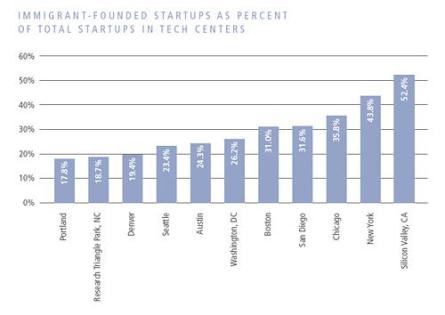
One example is Amit Aharoni (http://www.linkedin.com/in/aaharoni), Israeli-born founder and CEO of CruiseWise, selected as one of the "20 Hottest Silicon Valley Start-ups" by Silicon Alley Insider. The Stanford MBA raised $1.65 million and created 9 American jobs. TheUS Citizenship and Immigration Services then denied his visa request, forcing him to relocate to Vancouver and manage remotely via Skype (www.skype.com). Fortunately, after a report by Diane Sawyer on ABC World News Aharoni was granted a visa.
To see the video, please click here:
The technology community needs to lobby the US government to take immediate action and enact more sensible policy.
Levi Shapiro is a Partner at TMT Strategic Advisors, a research and strategy firm focusing on the technology, media and telecom sectors. He can be reached at levi@tmtstrat.com or via twitter: @levshapiro
Read all Levi's MediaBizBloggers commentaries at Unleavened Media.
Check us out on Facebook at MediaBizBloggers.com
Follow our Twitter updates @MediaBizBlogger
The opinions and points of view expressed in this commentary are exclusively the views of the author and do not necessarily represent the views of MediaBizBloggers.com management or associated bloggers. MediaBizBloggers is an open thought leadership platform and readers may share their comments and opinions in response to all commentaries.




